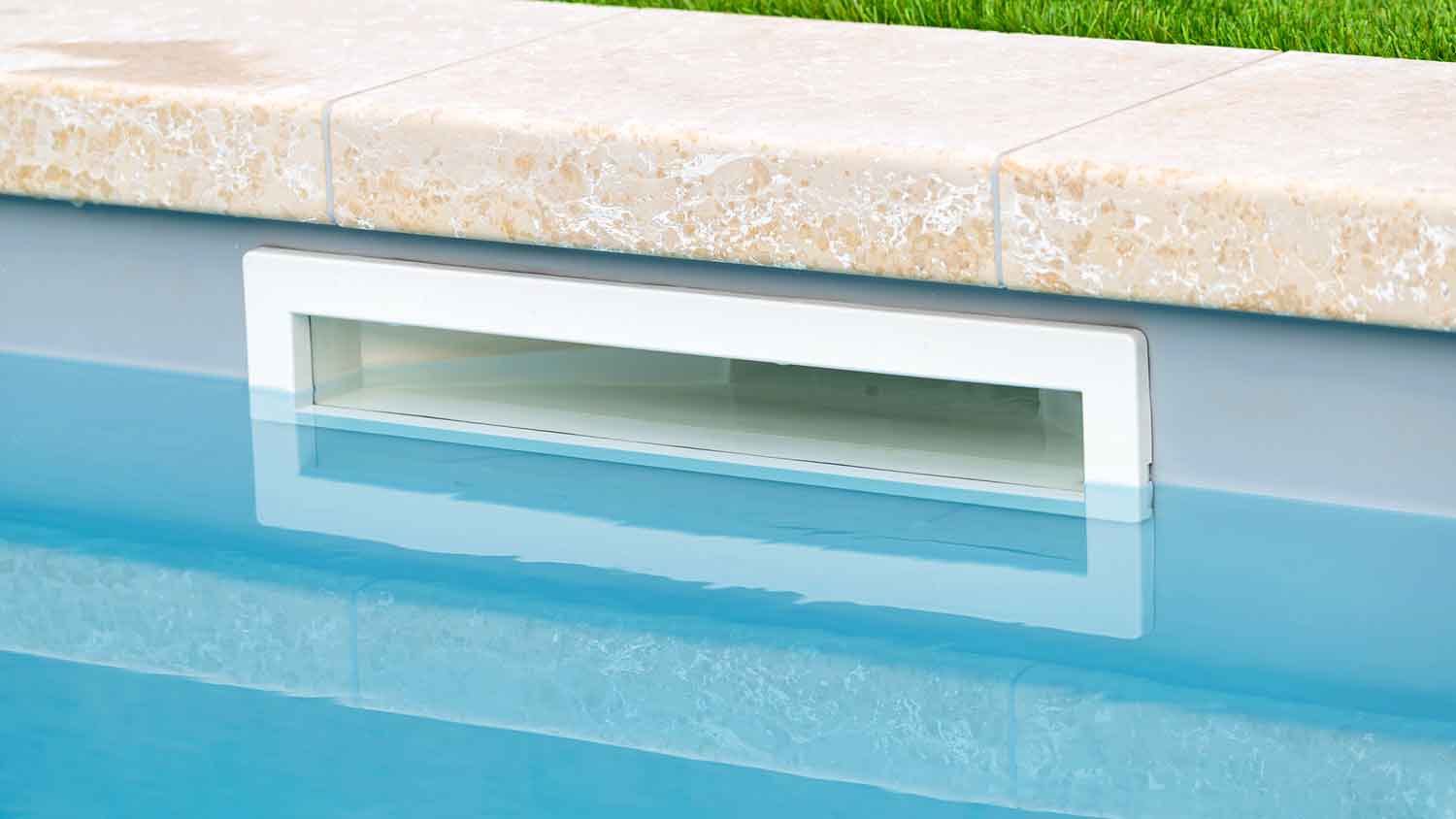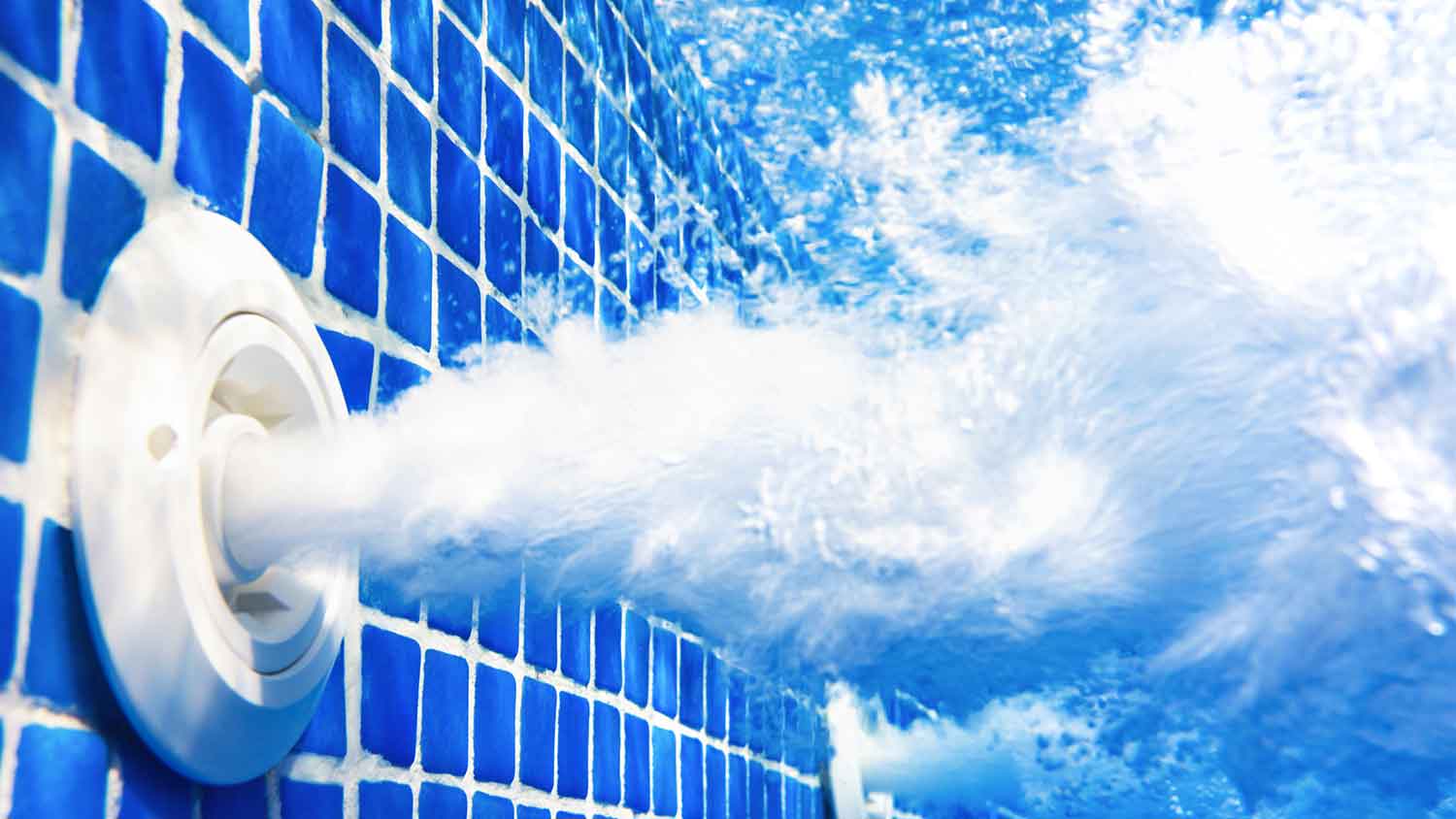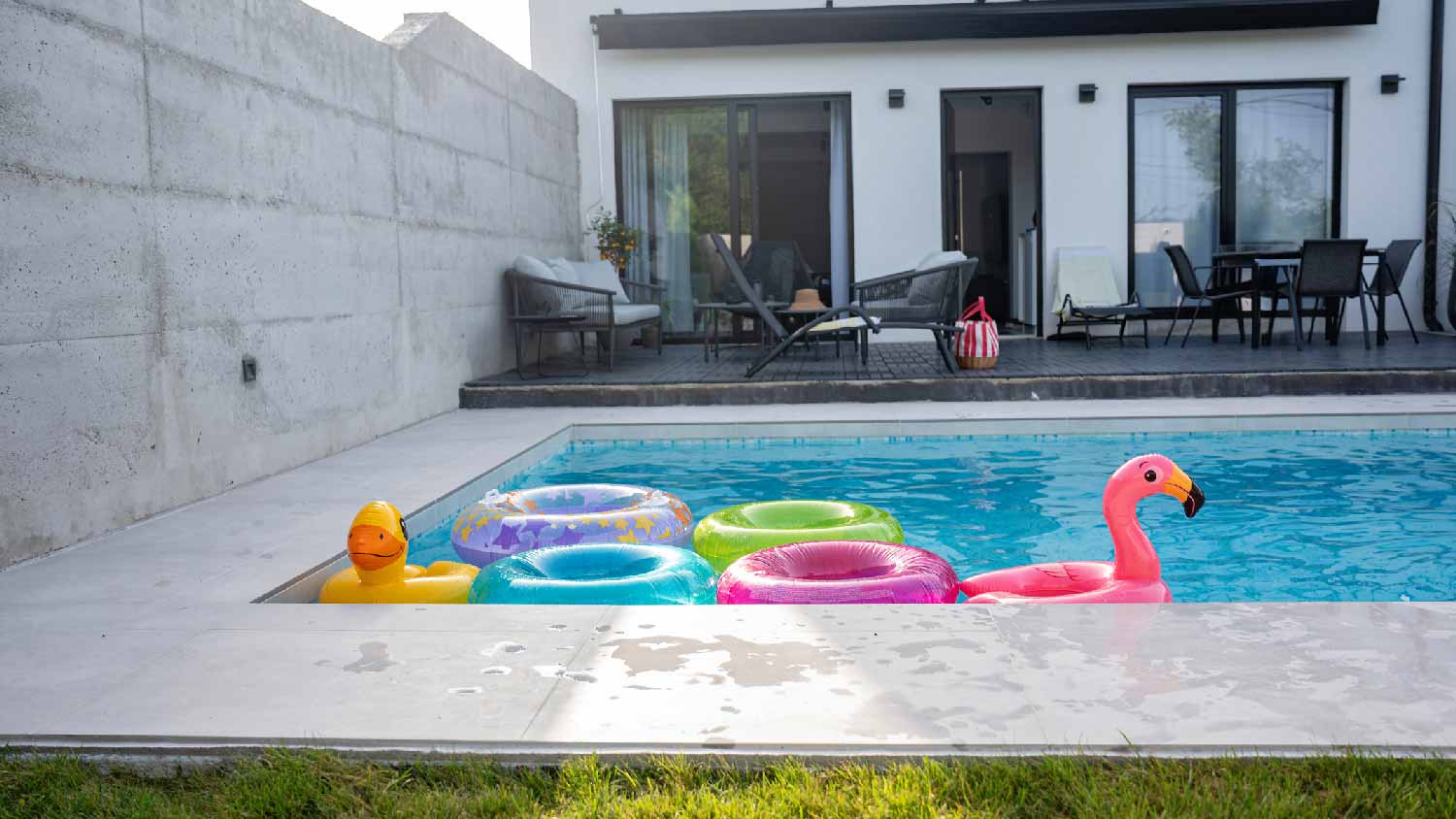Why Is My Pool Foamy? 4 Common Causes and Fixes
Swimming pool looking more like a bubble bath? Here’s why


If you don’t shower before swimming, you might notice foam in your pool.
Low calcium hardness levels and improper algaecide use can also lead to a foamy pool.
If you’ve ruled out these causes, there could be an air leak in your pump system.
You can address most of these problems without a professional’s help.
However, you should call a pro to fix mechanical issues, like pool pump problems.
Picture this: You’ve woken up and headed outside for your morning dip, just to realize that your pool is full of foam. While it’s not a pleasant discovery, the good news is that this problem is fairly easy to fix. But first, you’ll need to figure out why your pool is foamy. We’ll explain four of the most common causes below, as well as steps for solving each one.
1. Residue From Soap and Personal Care Products
You probably use a variety of personal care products—such as shampoo, lotion, makeup, deodorant, and soap—as part of your daily routine. If you jump into the pool without rinsing off, the residue from these products can get into the pool and create foam.
How to Fix It
Before using the pool, put on your bathing suit and take a quick shower. This will help wash away any soap and residue on your body, as well as leftover laundry detergent on your bathing suit. If you don’t want to track water through your house, consider building an outdoor shower.
2. Low Calcium Hardness Levels

Ideally, your pool’s calcium hardness level should be between 200 and 400 parts per million (ppm). If it’s below that, your pool has soft water, which is prone to foam up and damage pool surfaces.
How to Fix It
Start by testing your pool’s calcium hardness level to confirm that it’s low. If so, you can increase it by adding calcium chloride to your pool. There are different ways to use calcium chloride in your pool, so follow the manufacturer’s instructions on the product packaging.
3. Incorrect Use of Algaecide
Algae is never a welcome sight in your pool. Using algaecide is an effective way to get rid of it. But if you use the wrong type or amount, you could end up with a foamy pool.
How to Fix It
When using algaecide to remove algae from your pool, choose higher-quality products (such as copper- or silver-based algaecide) rather than inexpensive, low-quality versions. You should also follow the manufacturer’s dosing guidelines to avoid putting too much algaecide in your pool, which can also cause foaming.
4. Air Leak

Ruled out all these three issues but still dealing with a foamy pool? There might be an air leak in your pool pump system, which can create bubbles that look like foam when they rise to the pool’s surface.
How to Fix It
First, check your pool’s water level by looking at the skimmer. If it isn’t at least halfway covered by water, the water level isn’t high enough—and, as a result, the skimmer could be sucking in too much air. To fix it, add enough water so the skimmer is submerged halfway. If that doesn’t do the trick, there could be an issue with your pool pump. For that, it’s best to have a local pool repair pro take a look.
When to Call a Pro
You can solve most of these issues just by changing your habits or adjusting the products you put in your pool. However, if these simple fixes don’t work, there might be a bigger problem at hand—and it’s better to have a pool professional check it out. The cost of pool repairs varies depending on the specific problem, but on average, you’ll pay between $250 and $1,210.
Frequently Asked Questions
When there’s too much chlorine in your pool, you might experience symptoms like nausea, dizziness, and vomiting. Excessive chlorine can also give you a skin rash and irritate your eyes, throat, and nose. If your pool’s chlorine level is too high, turn off your chlorinator or chlorine feeder (if you have one). You can also remove the cover and let sunlight hit the water, which naturally reduces chlorine levels.
If your pool’s pH level is too high, chlorine won’t be as effective. Since chlorine is responsible for sanitation and keeping bacteria out of your pool, a high pH level could create a higher risk for bacterial diseases. It can also make you more susceptible to rashes and infections (like swimmer’s ear). Need to lower your pool’s pH? You can do it yourself for between $5 and $40.















